
You want a thick, thriving, and healthy lawn. But you might not feel comfortable with everything involved with its care. What does it take to achieve the best results and keep it looking that way?
We know that lawn care can sometimes feel elusive. While it seems simple enough at the onset, there’s actually quite a bit involved, and it can get more complex than people tend to realize.
Ultimately, the best lawns are typically those in which a homeowner and a lawn care pro partner in a joint effort toward achieving success. In this article, we’ll go over warm-season grass care in Memphis, TN, including advice for the practices that you’ll perform on your own as well as ways that a lawn care pro can help.
Achieving the best lawn care results boils down to following best practices. But many homeowners might not know everything involved. That’s why we’ve rounded up these Mid-South grass tips to help. These should help set you on the path to success.

People rarely recognize just how important proper mowing is to the overall health of their grass. Mowing is one of those seemingly simple tasks that most people assume can’t go wrong in any way. It’s just a matter of cutting the grass shorter.
But the truth is, mowing can have a substantial impact on your warm-season grass.
Mowing height is an important consideration. One of the biggest mistakes that people make is that they cut their lawn too short. But it’s actually healthier to keep your grass a little bit higher. The exact height that is ideal for your lawn will depend on your primary grass type.
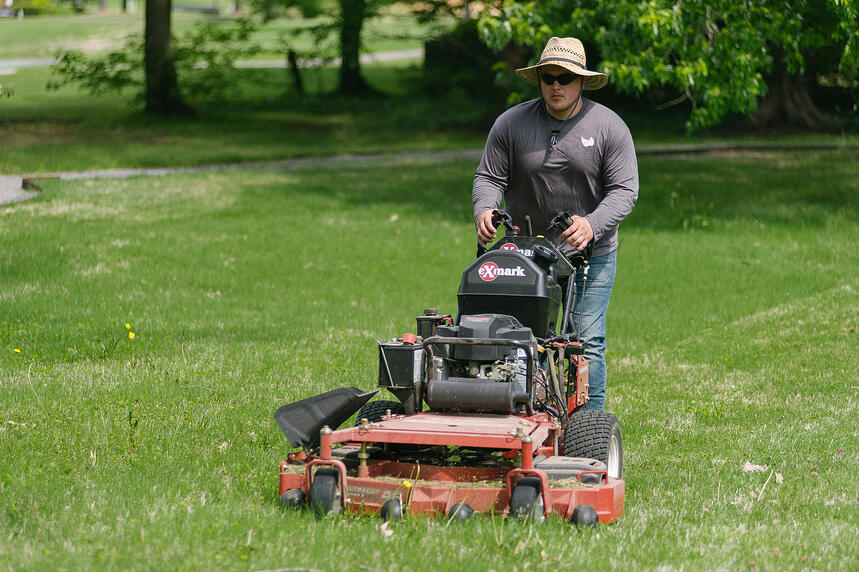
A large majority of the lawns that we work on have Bermudagrass, which has a recommended mowing height of one to two inches.
Cut height is important because of the fact that mowing puts a lot of stress on your lawn. The more you cut off, the more stressed your lawn will be. When you cut too short, it’s more challenging for your lawn to recover. That’s one reason why you may see a dull, green, or yellow color or an overall loss of vigor.
But another important consideration is how often you mow.
We get it…life gets busy and you might end up mowing your lawn bi-weekly as opposed to weekly. But this means that the lawn grows much longer in the process and you’re making more of a cut (which again, is more stress). This is not ideal when it comes to the overall performance of your lawn.
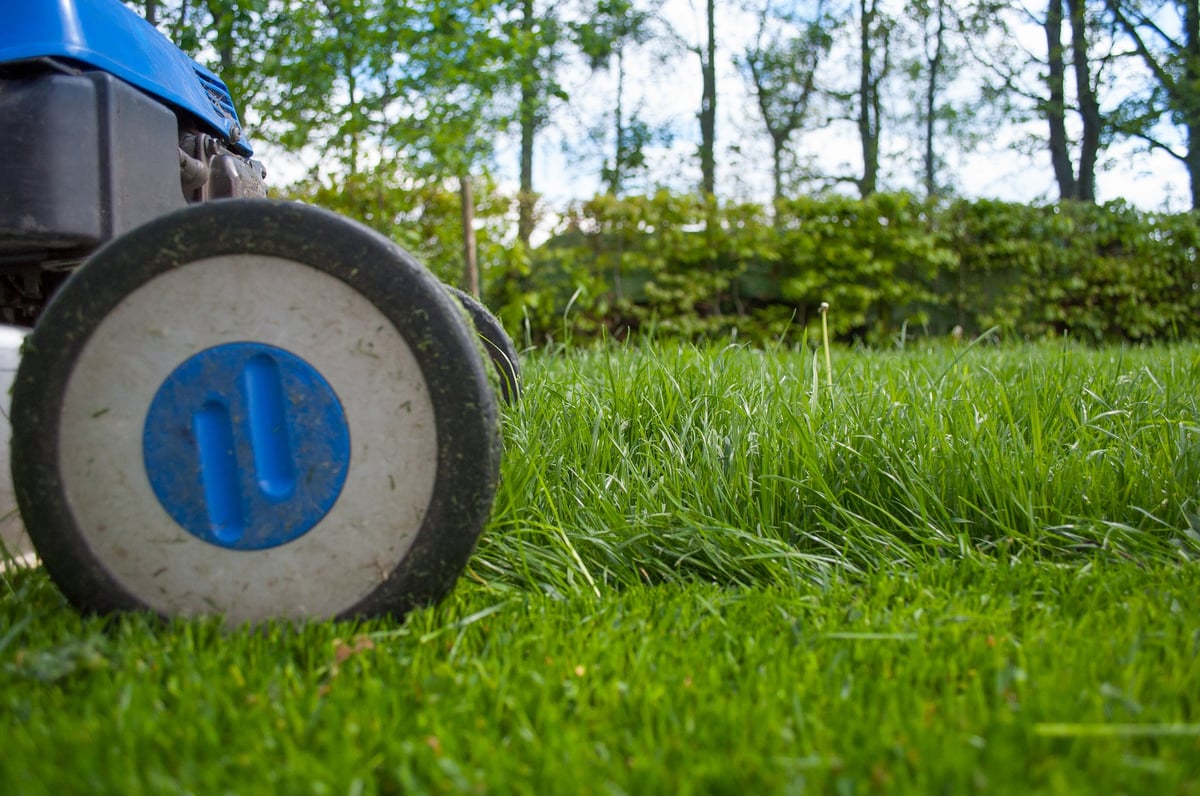
If you were to mow more often, you’d be able to cut less of your grass. We recommend cutting no more than one-third of grass blades at a time to minimize stress and achieve optimal color and performance.
Other mowing tips include mowing with sharp blades and a level mowing deck to put the least amount of stress on the lawn as possible. You want a clean, crisp cut every single time.
Unfortunately, we see dull mower blades used on lawns all of the time. The trouble with that is it “shreds” the grass, rather than making the clean “slice” that you really want. As you might have guessed, tearing up the lawn with dull blades can put unnecessary stress on the lawn and leave it prone to problems. Make sure that whoever is cutting your lawn is having the mower blades sharpened.
Besides mowing, another huge factor in the overall success of your lawn is your watering habits. That’s why our second warm-season lawn care tip is all about watering.
We know this seems like another no-brainer. You just need to get out there and get your lawn watered. But this is another task that if not performed properly can really impact the health of your lawn.
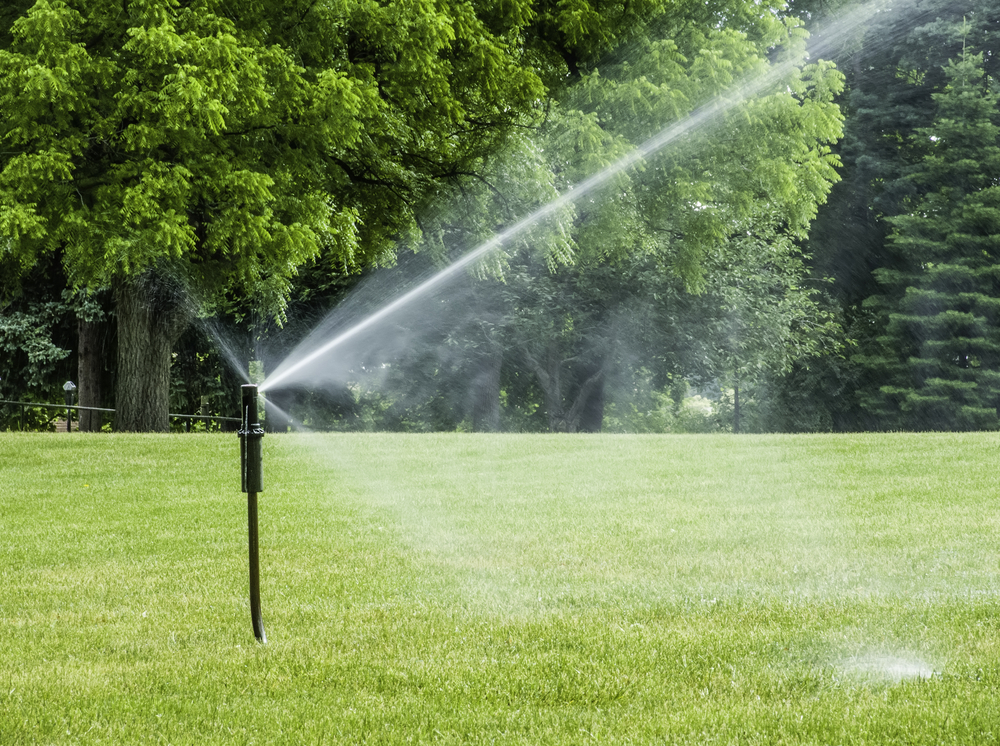
The timing of when you water is a critical factor. Though a lot of homeowners come home and decide to water after work, this can be problematic, particularly if night temperatures are over 65 degrees. That is because turf disease can develop from an interaction between a susceptible plant (in this case, grass), a disease-producing organism (such as fungus), and a favorable condition (hot and wet).
Watering in the middle of the day isn’t optimal either as evaporation will prevent water from reaching the roots where it’s needed most.
The ideal time to water the lawn is early in the morning just at sunrise or immediately beforehand. Your lawn roots will get a nice soaking before allowing the sun to naturally evaporate any excess moisture off of leaf blades before nightfall.
Ideally, the amount of water you want to put down is around an inch and a quarter per week.
Deep and less frequent watering is ideal in terms of how often to water. Watering 1 to 2 times per week will provide you with better results by giving your lawn plenty of time to dry between waterings. This also helps to reduce turf diseases.
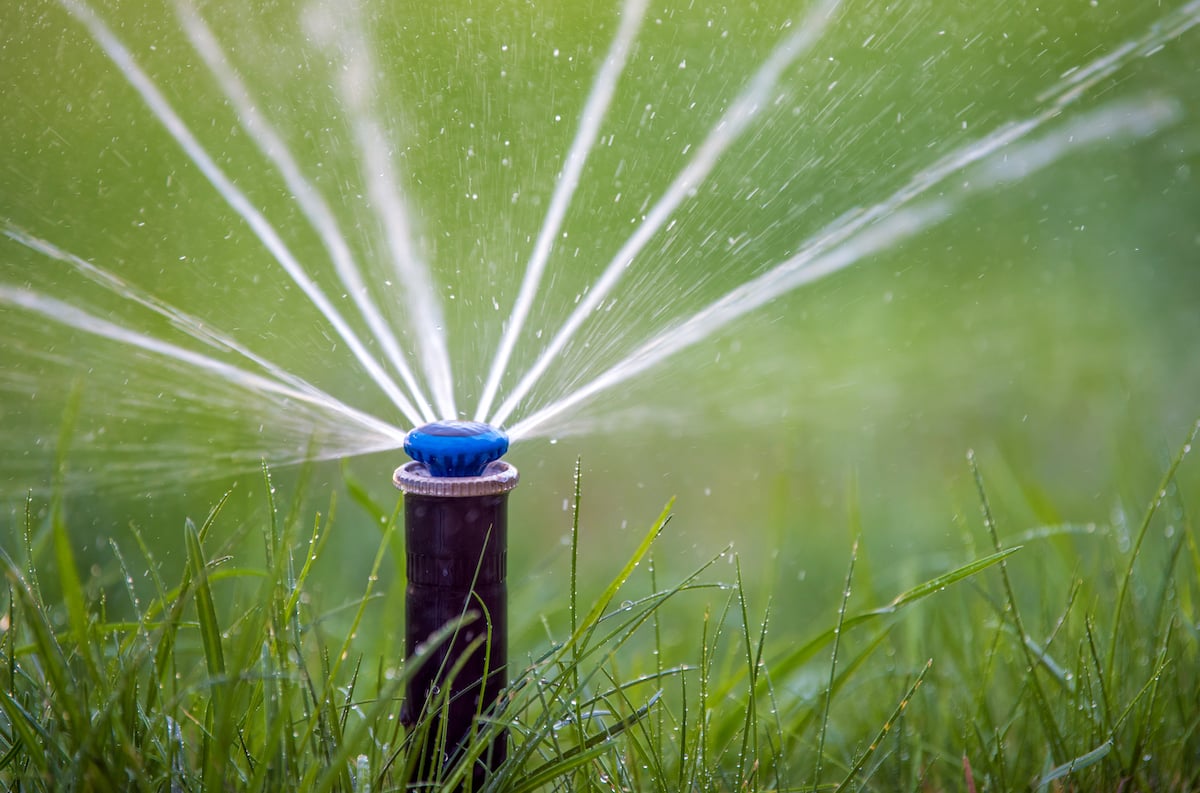
A “soaking” is the type of watering that you should be aiming for, as opposed to occasionally watering here or there. The goal is to deeply soak your lawn until the soil is moist to a few inches in depth.
The exact amount of time this will take varies depending on the size of your lawn and your sprinkler system but could take 45-60 minutes on average just to give you a ballpark idea.
Mother Nature will likely pick up some of that slack and do the watering work for you. But you can’t just assume a quick rain means you can skip watering for that week.
If you want to get a better idea of exactly how much water is reaching your lawn via rainfall you can purchase an inexpensive rain gauge at the local big box store or hardware store.
Watering and mowing are the two main cultural practices that you likely perform on your own. Additional lawn care services like lawn fertilization, pest control, and weed control are also very important but can be handed over to a pro to remove the burden from your shoulders. When you invest in a lawn care program, you gain peace of mind that your grass is receiving the additional care that it needs.
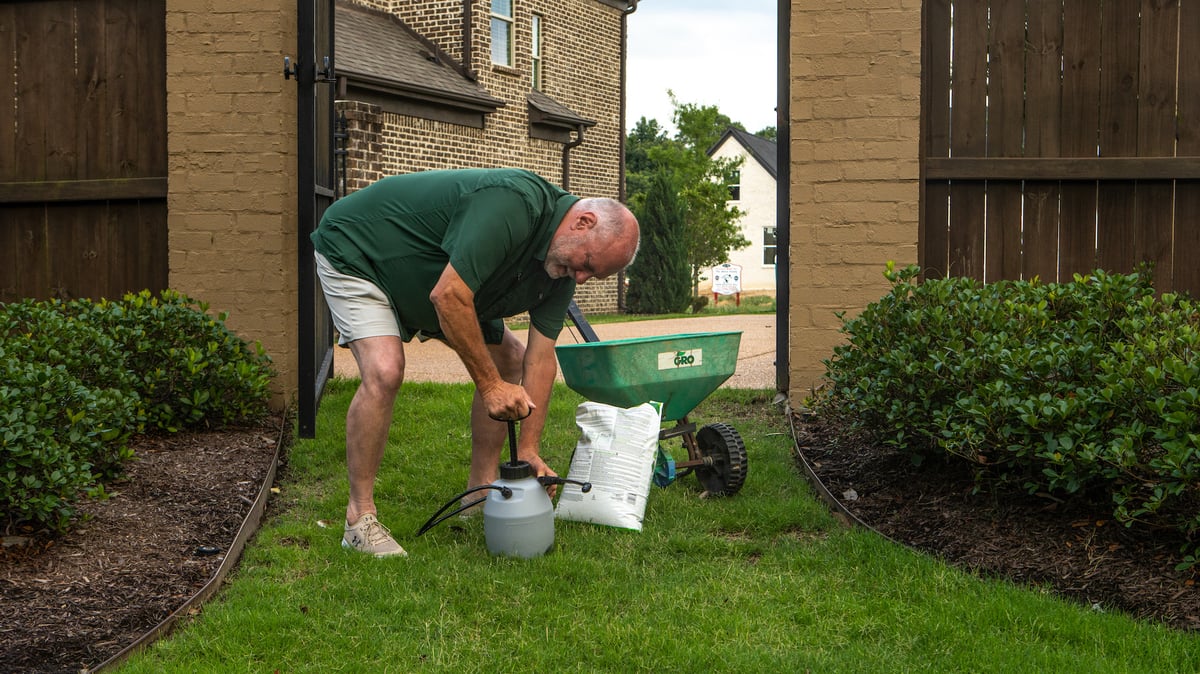
This is important as there are certain lawn problems that warm-season grasses can be more prone to. Your lawn care professional will keep these on his or her radar.
For instance, Bermudagrass might be faced with lawn grubs, surface-feeding insects, or even Armyworms, the latter of which seems to have a preference for this grass type. While these pests are not a problem every year, they can be highly destructive so it’s important to find them early.
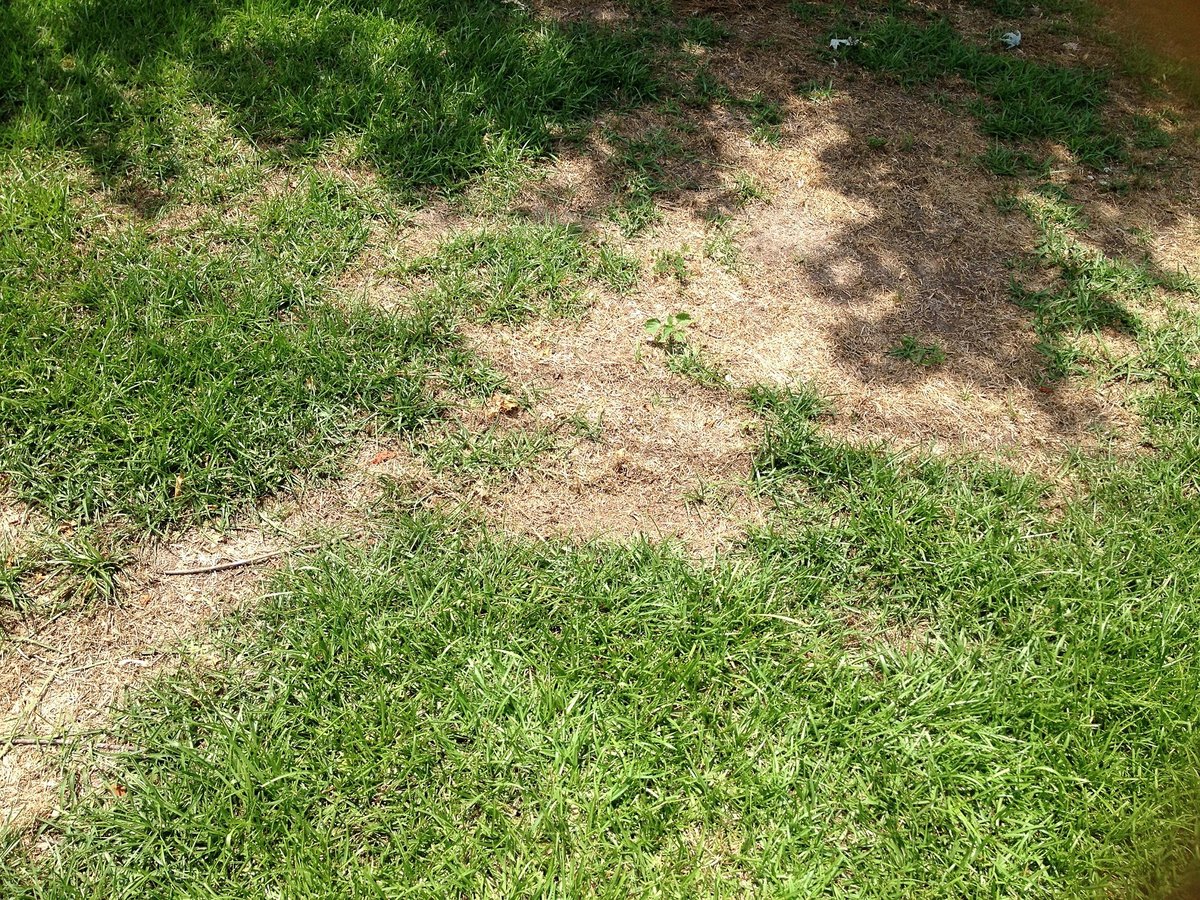
Another pest that is quite specific to Bermudagrass is the Bermudagrass Mite which will only feed on this lawn type. This type of damage generally looks like yellowing of the lawn or overall loss of vigor.
Rather than having to worry about any of these potential issues, you can work with a professional who will have your back. This allows you to remove the guesswork for all the various services that make up warm-season lawn care and focus on your two primary tasks: watering and mowing.

A pro can also help to make cultural recommendations like the ones we’ve mentioned above to help set you up for success. As we said, working together is the key to achieving the greatest success.
Hopefully, these warm-season grass tips have given you some ideas on how to best care for your lawn. We know that there can be a lot involved and you want to be confident that you are taking the right steps.
At Master Lawn, we believe that you ought to be able to have the lush green lawn that you desire without any confusion over how to achieve the best results. That’s why we can help take the guesswork out of the process and handle much of your lawn care for you.
We commend you for taking the time to read an article like this and trying to understand exactly what your lawn needs. It shows that you are committed to achieving great results. But we also understand that you’re probably looking to make the process as easy as possible on yourself.
We are here to help.
When you hand your worries over to a pro, you can trust that your lawn is going to get everything that it needs. We’ll support you with cultural recommendations for watering and mowing, and you can count on us to handle the rest. By choosing to work with Master Lawn, we can make your wish of having a truly beautiful lawn our command!
Ready to have a lawn that you love at your Tennessee or Northern Mississippi home? Talk to a lawn care expert, choose from 3 program options, and become the master of your lawn.
Image Source: lawn mower height
These Stories on Lawn Care
8255 Center Hill Rd
Olive Branch, MS 38654
8164 MS-178
Olive Branch, MS 38654
Phone: (901) 445-9336
Fax: (901) 853-7353
Copyright © Master Lawn | All Rights Reserved.